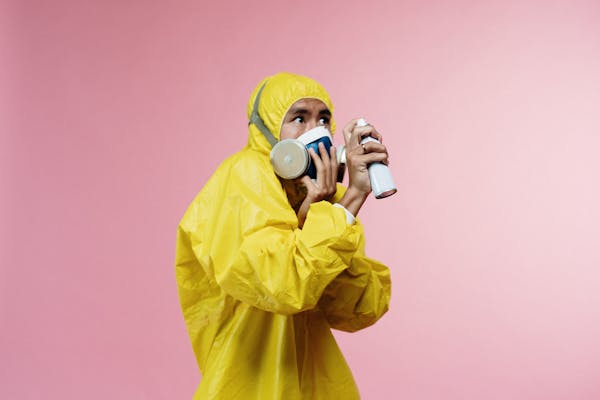
The emergence of new viral infections poses significant challenges to public health worldwide. One such virus that has recently gained global attention is the monkeypox virus. Although previously confined to certain regions of Africa, the monkeypox virus has now spread beyond these boundaries, raising concerns about its transmission, symptoms, and prevention. This article aims to provide a detailed overview of the monkeypox virus, including its origins, symptoms, transmission methods, and most importantly, how to avoid monkeypox virus infection.
Introduction to Monkeypox Virus
Monkeypox is a rare viral disease caused by the monkeypox virus, a member of the Orthopoxvirus genus in the family Poxviridae. It is similar to smallpox but is generally milder in humans. First identified in 1958 when two outbreaks occurred in colonies of monkeys kept for research, hence the name “monkeypox,” the virus has since been observed in various animal species, including rodents and primates.
The first human case of monkeypox was recorded in 1970 in the Democratic Republic of the Congo (DRC). Since then, human cases have been reported in several Central and West African countries, with occasional cases reported in other regions due to international travel or imported animals.
The Origins and Evolution of Monkeypox Virus
The monkeypox virus is a zoonotic virus, meaning it can be transmitted from animals to humans. It is closely related to the variola virus, which causes smallpox, and vaccinia virus, used in the smallpox vaccine. There are two distinct clades of the monkeypox virus: the West African clade and the Central African (Congo Basin) clade, with the latter being more virulent and associated with higher mortality rates.
Monkeypox is primarily found in the rainforest regions of Central and West Africa, where humans are often exposed to the virus through direct contact with infected animals or contaminated materials. The virus has likely been circulating in these regions for centuries, but it has only recently gained international attention due to its spread to non-endemic countries.
Transmission of Monkeypox Virus
The transmission of the monkeypox virus can occur through several pathways, making it crucial to understand how to avoid monkeypox virus infection. These pathways include:
- Animal-to-Human Transmission: This is the most common mode of transmission in endemic regions. Humans can contract the virus through direct contact with the blood, bodily fluids, or skin or mucosal lesions of infected animals. Hunting, skinning, and consuming bushmeat from infected animals are significant risk factors.
- Human-to-Human Transmission: Although less common than animal-to-human transmission, human-to-human transmission can occur through close contact with respiratory secretions, skin lesions of an infected person, or recently contaminated objects. Transmission can also occur via respiratory droplets during prolonged face-to-face contact, such as during caregiving or intimate relationships.
- Fomites: The virus can survive on surfaces and objects, making it possible for individuals to contract the virus by touching contaminated items like bedding, clothing, or medical equipment.
Understanding these transmission pathways is essential for developing strategies to avoid monkeypox virus infection, especially in non-endemic regions where the virus is not well understood.
Symptoms of Monkeypox Virus
Monkeypox virus infection typically presents with symptoms similar to those of smallpox, though generally milder. The incubation period (time from infection to symptoms) ranges from 5 to 21 days, with most cases occurring within 6 to 13 days. The illness can be divided into two periods:
- Invasion Period (0-5 days): During this phase, patients may experience fever, intense headache, lymphadenopathy (swelling of the lymph nodes), back pain, muscle aches (myalgia), and severe fatigue. Lymphadenopathy is a distinctive feature of monkeypox compared to other diseases that may initially appear similar, such as smallpox.
- Eruption Period (1-3 days after the fever): This phase is characterized by the appearance of a rash, usually starting on the face and spreading to other parts of the body, including the palms of the hands and soles of the feet. The rash evolves from macules (flat, discolored lesions) to papules (raised lesions), vesicles (fluid-filled blisters), and pustules (pus-filled lesions), eventually forming scabs that fall off.
The severity of the illness varies, with most patients recovering within 2 to 4 weeks. However, severe cases can occur, particularly in children or individuals with compromised immune systems. Complications may include secondary bacterial infections, respiratory distress, bronchopneumonia, sepsis, encephalitis, and corneal infection with subsequent loss of vision.
Diagnosis of Monkeypox Virus
Diagnosing monkeypox can be challenging, especially in regions where the disease is rare. However, early detection is crucial for effective management and containment. Diagnosis typically involves:
- Clinical Assessment: A healthcare provider will assess the patient’s symptoms, particularly the characteristic rash, and consider their travel history, potential exposure to infected animals, and contact with infected individuals.
- Laboratory Testing: Confirmation of monkeypox virus infection requires laboratory testing, including polymerase chain reaction (PCR) to detect viral DNA, electron microscopy to visualize the virus, or virus isolation in cell culture. PCR is the preferred method due to its accuracy and sensitivity.
- Differential Diagnosis: Monkeypox can resemble other viral exanthems, such as chickenpox, measles, or bacterial skin infections. It is essential to differentiate monkeypox from these conditions to ensure appropriate treatment and public health measures.
Treatment of Monkeypox Virus
There is no specific treatment approved for monkeypox virus infection. However, supportive care is essential to manage symptoms and prevent complications. Treatment strategies include:
- Symptomatic Relief: Antipyretics and analgesics may be used to reduce fever and pain. Antibiotics can be prescribed for secondary bacterial infections.
- Fluid Management: Ensuring adequate hydration is crucial, especially in patients with severe illness or complications.
- Antiviral Medications: Although not specifically approved for monkeypox, antiviral drugs such as cidofovir, brincidofovir, and tecovirimat have shown some efficacy against poxviruses in laboratory settings and may be considered in severe cases.
- Vaccination: The smallpox vaccine has been shown to provide some cross-protection against monkeypox. In certain cases, vaccination post-exposure may be recommended to prevent the onset of the disease.
Prevention: How to Avoid Monkeypox Virus
Preventing monkeypox virus infection requires a multifaceted approach, particularly in areas where the virus is not endemic. The following measures are essential for reducing the risk of infection:
- Avoid Contact with Infected Animals: In endemic regions, individuals should avoid contact with wild animals, especially those that may be sick or dead. This includes avoiding the consumption of bushmeat, which is a known source of infection.
- Practice Good Hygiene: Frequent handwashing with soap and water or using alcohol-based hand sanitizers is critical, particularly after contact with animals, handling contaminated objects, or being in close proximity to infected individuals.
- Use Personal Protective Equipment (PPE): Healthcare workers and caregivers should wear appropriate PPE, including gloves, masks, and gowns, when caring for infected patients. This reduces the risk of human-to-human transmission.
- Isolate Infected Individuals: Infected individuals should be isolated from others to prevent the spread of the virus. This is especially important in healthcare settings and households where close contact is likely.
- Vaccination: Vaccination with the smallpox vaccine has been shown to offer some protection against monkeypox. In outbreak situations, ring vaccination (vaccinating those who have been in contact with an infected person) may be implemented to control the spread of the virus.
- Avoid Travel to Endemic Regions: For individuals in non-endemic regions, avoiding travel to areas where monkeypox is known to be prevalent can reduce the risk of exposure.
- Education and Awareness: Public health campaigns aimed at educating communities about the risks of monkeypox and how to avoid monkeypox virus infection are essential. This includes information on recognizing symptoms, seeking medical care early, and understanding transmission pathways.
Global Response to Monkeypox Virus
The recent spread of monkeypox to non-endemic countries has prompted a global response aimed at controlling the virus and preventing further outbreaks. Key aspects of this response include:
- Surveillance and Monitoring: Enhanced surveillance systems have been established to monitor and track cases of monkeypox, particularly in non-endemic regions. This includes contact tracing and testing of suspected cases.
- International Collaboration: Countries are collaborating through organizations such as the World Health Organization (WHO) to share information, resources, and strategies for controlling the spread of the virus.
- Research and Development: Ongoing research is focused on understanding the monkeypox virus better, including its transmission dynamics, potential treatments, and the development of more effective vaccines.
- Public Health Measures: Governments and health agencies have implemented public health measures, including travel advisories, quarantine protocols, and vaccination campaigns, to prevent the spread of monkeypox.
Challenges in Controlling Monkeypox Virus
Despite the global response, several challenges remain in controlling the spread of monkeypox:
- Lack of Awareness: In non-endemic regions, there is often a lack of awareness about monkeypox, leading to delayed diagnosis and treatment. This can contribute to the spread of the virus.
- Limited Resources: In endemic regions, limited healthcare resources and infrastructure can hinder efforts to diagnose, treat, and contain monkeypox outbreaks.
- Cross-Border Spread: International travel and trade can facilitate the spread of monkeypox to new regions, making it challenging to contain outbreaks.
- Vaccine Hesitancy: Vaccine hesitancy, fueled by misinformation or distrust of health authorities, can undermine efforts to control monkeypox through vaccination. Ensuring public confidence in vaccines and addressing concerns is crucial for effective prevention.
Future Directions and Research
Ongoing research is vital to enhance our understanding of the monkeypox virus and improve strategies for managing and preventing infection. Key areas of focus include:
- Vaccine Development: Research is underway to develop and improve vaccines specifically targeted at monkeypox. While the smallpox vaccine offers some protection, a monkeypox-specific vaccine could provide better coverage and reduce the risk of transmission.
- Antiviral Therapies: Developing effective antiviral medications for monkeypox is a priority. Continued research into drugs that can target the virus and reduce its severity is crucial for managing outbreaks.
- Surveillance and Modeling: Improved surveillance systems and epidemiological modeling can help predict and track the spread of monkeypox, allowing for more targeted public health interventions.
- Understanding Animal Reservoirs: Investigating the animal reservoirs of monkeypox and their interactions with humans is essential for preventing future outbreaks. This includes studying the ecology of the virus and identifying potential new hosts.
- Global Coordination: Enhancing global coordination and information sharing between countries and health organizations can improve the response to monkeypox outbreaks and ensure that resources are used effectively.
Conclusion
Monkeypox is a viral disease with the potential to spread beyond its traditional endemic regions, posing challenges to global public health. Understanding the virus, its transmission pathways, symptoms, and treatment options is crucial for managing and preventing infection. The most effective way to avoid monkeypox virus infection involves a combination of preventive measures, including avoiding contact with infected animals, practicing good hygiene, using personal protective equipment, isolating infected individuals, and vaccination.
As monkeypox continues to be monitored and studied, public health efforts must focus on enhancing awareness, improving surveillance, and developing effective vaccines and treatments. By staying informed and implementing preventive strategies, individuals and communities can reduce the risk of monkeypox and contribute to global efforts to control this emerging infectious disease.
For more information on how to avoid monkeypox virus and to stay updated on the latest developments, it is essential to follow guidelines provided by public health authorities and healthcare professionals.






